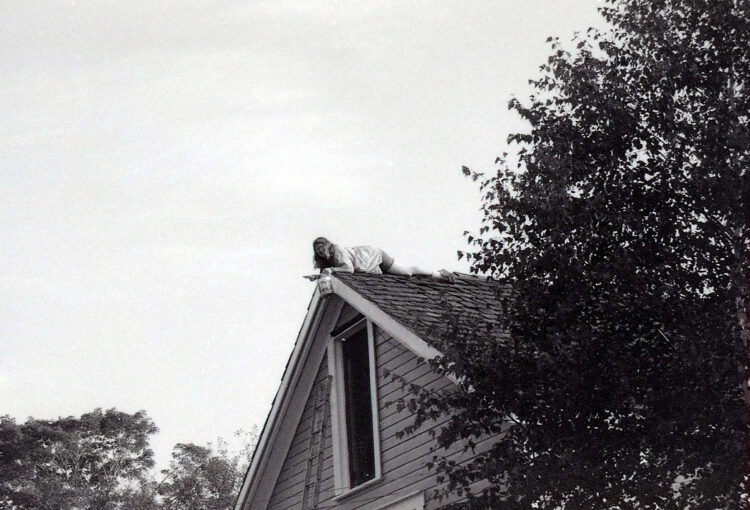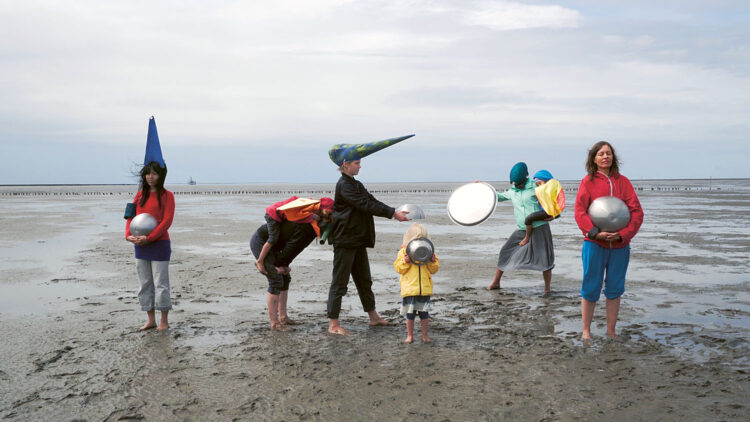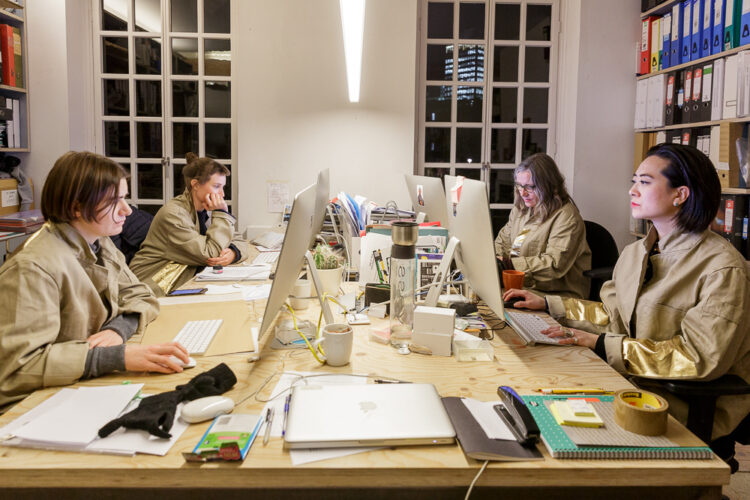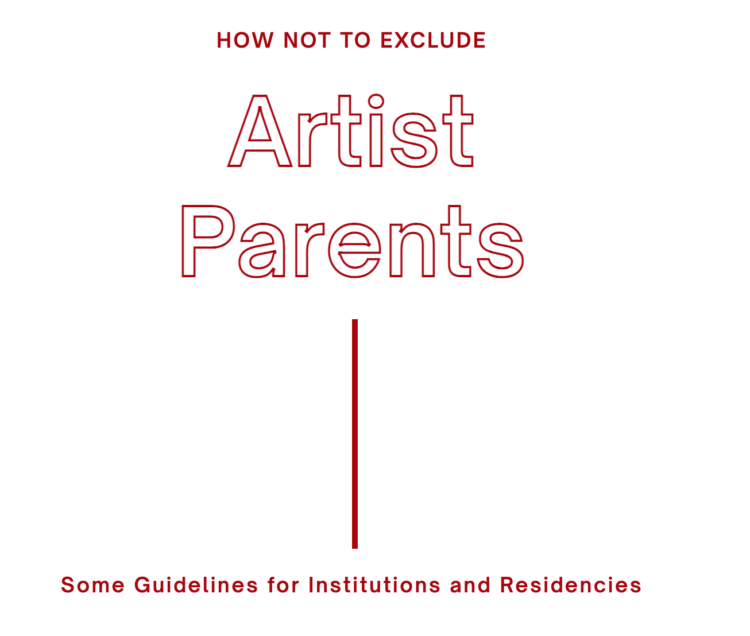Guest editors: Maja Bekan and Angela Serino
Deadline: 3 April 2023
Published: September/October 2023
In 1978, feminist writer Kate Millett founded an art colony for women on a piece of land with a run-down farmhouse on the outskirts of Poughkeepsie, in the state of New York. In Millett’s vision, the colony was a ‘corner’ where women could live together ‘as after the revolution.’ The revolution being a radical change much needed to transform the social, cultural and political system that discriminated against women, which she had acutely analysed in Sexual Politics (1970). [1]
Operating initially only in summer, women would work on the Farm for at least five hours a day – carrying on tasks often never done before, such as clearing fields, pruning spruce trees, and fixing both buildings and machinery – , and they would then spend the remaining time on their art practice.
The Farm was not immune from the ambivalences and conflicts often coming with collective projects, however, for its duration it was a place of support for women, both hetero and queer, in several ways. [2] It offered a concrete place to focus on one’s work, facilities, mentorships, collective moments that helped create a community where women could produce and discuss their work, while experimenting with a new sexual and social identity.

Millett’s project with all its contradictions works here as inspiration to open up and discuss desirable, not yet existing but necessary forms of support for artists. In this issue we want to make space for all that sustains and thus shapes an art practice, what bears, props and holds up, what allows someone to stand as an artist today.
We’d like to invite you to share your ideas of structures that support you, or imagine what structures can open up a new space that you need, hope, aspire to find and inhabit as an artist or art worker.
Supports can be forms of organisation, (institutional) practices, but also principles, conditions or objects that should be there to create a change or a betterment of what is available now for you as a parent artist, a mature (woman) artist, a care-giver, a love-maker or more.
How would this that holds you – temporarily, or even permanently – would look like? What elements would be made of?
Artists do not operate in isolation. On the contrary, their work develops and thrives in relation to a community, through cultivation of relationships and networks of influence, and according to the presence – or lack thereof – of specific possibilities, concrete material conditions and institutional arrangements. There is not ‘a genius artist’, rather, as pointed out by art historian Linda Nochlin in the 1970s, and echoed more recently by artist Mary Jirmanus Saba. [3] The idea of artistic genius or talent is in itself reflecting a specific idea of art and artistic practice (patriarchy), where the conditions for producing art are made invisible. “It seems probable that the answer to why there have been no great women artists lies not in the nature of individual genius or the lack of it, but in the nature of given social institutions and what they forbid or encourage in various classes or groups of individuals.” [4]
In artists Céline Condorelli’s and Gavin Wade’s words, supports are “things that encourage, give comfort, approval, and solace; care for and provide consolation and the necessities of life. (..) [Support is] that which advocates, articulates, substantiates, champions and endorses; what stands behind, underpins, frames, presents, maintains, and strengthens.”[5]
For us it is also all that which inhabits the space in between ‘the erected’ and ‘the inclined’, as articulated by philosopher Adriana Cavarero.
In Inclinations (2016), Cavarero describes two geometrical shapes – the verticality and the relational –, as two models of subjectivity, which are also two postural ethics, different and in opposition.
The first is a model of subjectivity that represents the subject as an erect, autonomous, and rational self. Like the standing ‘I’ penned on a page, it is ‘retto’ as vertical and it also speaks of ‘rectitude’ because it does not deviate.
For Cavarero it represents the western subject, praised precisely for his ability to both be standing and be right, thanks to his own individual efforts. “Philosophers know that man rises and becomes vertical in many ways: standing upright, rising above the beasts, or more maliciously above one’s fellow men, rising towards God, standing rightly, and even as Kant says, rising above himself.”[6]
When we look at ‘the relational’, instead, here the essential dimension is the inclination towards the other. Using several examples from philosophy, art and literature, she makes a plea to recognise the centrality of this alternative geometry. The inclination hints to a movement, it is a ‘predisposition to respond’, not yet the action itself. However, what gives the input for a possible movement is acknowledging the vulnerability and the interdependence from one another as shared conditions of all human beings.
Commenting on Cavarero’s work, philosopher Judith Butler adds a further interpretation to this relation and recognises that the inclined and the upright figure are ‘never fully oppositional’, “for the upright posture is from the start formed by a history of inclining and leaning out, enabling and disabling care, faltering and falling, a history that does not precisely come to an end, even for the most self-standing of the able-bodied among us.”[7]
Her words suggest that, in short, the I is never alone. “Before or after [standing], or in a moment of failing, doubt, or physical impossibility, the I may be supported by someone, or by more than one person or structure.”[8]
Inspired by these ideas, we’d like to put our attention precisely on this space of relations and possibilities between what stands and what helps someone to stand in the art world.
In particular, we want this to be the occasion for a more extended conversation, one that refers to women artists but not only. Thus, we welcome contributions that use the history (past and present) of women artists and their ongoing challenge of normative rules, to propose models, actions, concepts that can better support the work of artists on every level.
Contributions can refer to concrete as well as imaginary supports for change. They can be inspired by ideas of radical care, (im)possible sisterhood, motherhood, friendship, collective and feminist practices in general.
The following are examples of what support can mean:

How Not To Exclude Artist Parents is a manifesto written by art critic Hettie Judah and a group of artists in 2021.

We accept artworks, interviews, conversations, scripts, articles, academic texts, analyses of artworks, manifestos and poetic reflections.
Proposals (200-300 words) with attached résumés and related image material can be submitted until April 3, 2023 via redactie@tijdschriftkunstlicht.nl. Selected authors and artists will be invited to write a 2,500-word paper (excluding notes) or submit an artistic contribution.
Authors who publish in Kunstlicht will receive three complimentary copies. Kunstlicht is a volunteer-run academic journal and is not able to provide an author’s honorarium; time is compensated with time. Three years following publication, papers will be submitted to the freely accessible online archive.
Maja Bekan and Angela Serino are long-time friends and collaborators. They first met at Kunsthuis SYB, a residency in Friesland, and later initiated “Bodies at Work”, a project that wanted to voice what kind(s) of “work” it is that art and cultural workers do. Involving various collaborations, “Bodies at Work” consisted of small-scale performances, lectures, conversations, and printed materials. The project was launched in 2012 and was hosted by ADA Rotterdam, Institute for Provocation, Beijing, China; Bar, Barcelona, Spain; Remont Gallery, Belgrade, Serbia.
Maja Bekan
Maja Bekan is performance and visual artist. Bekan’s work explores and questions mediation and delegation of artwork production. She is interested in a collaborative and social approach to explore personal histories, truths, economies and social relations. Bekan works on long-term research-based projects that involve different levels of collaboration, presented to the public in the form of performances, site-specific environments, and video/audio/text-based installations. The protagonists of Bekan’s work are often women: artists, activists, students, retirees, and people seeking a place for themselves in difficult circumstances.
She was artist in residence at ISCP New York, Delfina Foundation London, AIR Laboratory (U-jazdowski) Warsaw, IFP Beijing China and AIR Berlin Alexanderplatz.
Maja Bekan has exhibited work at Tent, Rotterdam, ISCP New York, Ujazdowski Castle Centre for Contemporary Art, Warsaw; Kunsthaus, Graz; Van Abbemuseum, Eindhoven, Melly (former Witte de With) Rotterdam, Casco Art Institute among others.
Angela Serino
Angela Serino is a writer, researcher and curator based in Amsterdam who has worked with artists’ residencies in various roles – as curator of temporary residency projects (RedLight Art Amsterdam), as part of the artistic committee of Kunsthuis SYB (NL), and as curator in residency of several international programmes. She curated ‘Residencies as Learning Environments’, the international meeting for Artists-in-Residencies initiated by FARE (2015), and wrote on time and residencies for Kunstlicht’s ‘Unpacking Residencies’ issue (2018), and DutchCulture | TransArtists’ magazine ‘Station to Station’ (2022).
She is the co-founder of ARRC, a collective that studies art residencies, with fellow researchers Pau Catà (Barcelona), Morag Iles (Newcastle), Miriam La Rosa (Melbourne) and Patricia Healy Mcmeans (Minneapolis). She is interested in individual and collective moments of research, self-reflection and learning around residencies programs.
She is currently working on her archive as a way to retrace and discuss ideas of care, time and artistic production.
Angela graduated in Mass Communication at the University of Siena with a thesis on Interactivity and Art and attended the Curatorial Programme at de Appel art centre in Amsterdam.
[1] ‘I wanted to see if we could find some little corner of the world to live in, where we could live a life we imagined, but couldn’t live in the rest of the world. Well now it seems to me .. if you are going to believe in a certain way to live after you fix everything, you ought to have a taste of it now just to see if it’s worth it. And have some experience at that so you know how to do it and you could work on it. So that’s the purpose of what is otherwise a kind of utopian scheme. If it weren’t connected with the whole notion of social change going on in the real world that you’re also committed to, you’d just be running away.’ Kate Mille, The Farm, July 1985, in S.O.J. Sisters of Jam, A Piece of Land, 2014, p.133.
[2] The colony was very much dependent on Millet’s presence and investments. It became self-sustainable by growing and selling Christmas’ trees, only several decades later than originally planned. Communal life did not come without tensions and continuous adjustments in group dynamics. ‘I suppose we bonded, but I also remember that we argued just about every day we were on the site.’, in S.O.J, op. cit., p.167.
[3] Mary Jirmanus Saba, ‘Boston, June 2019 (Or “Artstic Genius is a Myth of the Colonial Patricarchy: Part One”)’, in ‘Why Call it Labour?, ArchiveBooks 2021, pp. 25-38.
[4] Linda Nochlin “From 1971: Why Have There Been No Great Women Artists?”, Art News, May 30, 2015. Retrieved: 20 February, 2023. Link: https://www.artnews.com/art-news/retrospective/why-have-there-been-no-great-women-artists-4201/
[5] Céline Condorelli, Gavin Wade, James Langdon,Support Structures, Sternberg Press, 2014, p. 6.
[6] Adriana Cavarero, Inclinations: A Critique of Rectitude, Stanford University Press, Stanford, 2016, p. 97.
[7] Judith Butler, ‘Leaning Out, Caught in the Fall: Interdependency and Ethics in Cavarero’, in: Huzar, Timothy J. and Woodford, Clare, Toward a Feminist Ethics of Nonviolence, Fordham University Press, 2021, p. 59.
[8] op.cit, p. 58.


